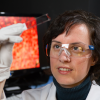news
New Leadership for REM
Primary tabs
For almost 30 years, the Georgia Institute of Technology and Emory University have been bringing together the collective groundbreaking research of engineers, scientists and clinicians in a comprehensive effort to improve the human condition by transforming the treatment of diseases and injuries.
A unique, formal research relationship between one of the top public engineering schools (Georgia Tech) and a leading private medical school (Emory) was forged in 1987 with the establishment of the Emory/Georgia Tech Biomedical Technology Research Center. The partnership was further solidified in 1998 with creation of the Georgia Tech/Emory Center for the Engineering of Living Tissues (GTEC, a National Science Foundation Engineering Research Center).
Since then, GTEC has given way to the latest and most ambitious joint effort in bio-research, with the launch in 2011 of the Center for Regenerative Engineering and Medicine (REM), which began as an initiative between Tech and Emory, but has grown in reach and potential with the recent addition of the University of Georgia (UGA). And that may not be the end of the expanding collaborative web.
“The addition of UGA is significant, and I would like to see the Center grow even further,” says Johnna Temenoff, who recently stepped into the REM co-director role at Tech. Each participating university has an REM co-director – Ned Waller represents Emory and Steve Stice is at UGA’s helm. “We have an opportunity to really turn this into a statewide initiative and perhaps garner even greater support for our work.”
The work of REM, which now utilizes the distinct strengths of three of the nation’s leading research universities, addressing a number of issues related to the body’s ability to heal itself, including the intra-articular delivery therapies for life-long healthy joints, biomaterials to prevent infection and reduce inflammation, reprogramming cells for tissue regeneration, stem cell processing and scale-up, cell therapies for improvement of patients with severe cardiac damage, implantable, biodegradable sensors to monitor tissue healing, functional restoration following severe limb trauma, implants that grow and adapt in pediatric patients, and nerve repair/regeneration.
Some of this research was the focus of discussion at last month’s annual REM Retreat, hosted in Athens at UGA for the first time. “We had such a strong turnout, and some great science was presented,” says Bob Guldberg, executive director of the Parker H. Petit Institute for Bioengineering and Bioscience, and the previous Georgia Tech REM co-director. “The expanded partnership with UGA reflects the importance of collaboration between different institutions, and the change in leadership only added to the excitement at this year’s retreat.”
According to Stice, a true innovator in the area of stem cell research, about 110 researchers attended the annual event, and the participants from UGA come from a diverse range of specialties, which he believes exemplifies the state’s growing reputation in the field.
“Georgia has been and continues to be a hotbed of activity in regenerative medicine, and the REM presentations at the retreat were a great introduction for new members and faculty who want to work collaboratively,” Stice says. “I’m personally aware of contacts and projects that will work collaboratively in various areas, including orthopedics and cardiovascular treatments, among other things.”
This year’s retreat helped solidify an ambitious agreement between the collaborating universities. Tech and Emory had already laid the groundwork, creating an REM case statement that was supported enthusiastically by both university presidents. Says Georgia Tech President G.P. “Bud” Peterson, “Through applying regenerative technologies to unmet clinical needs, the collaborative partnership between Georgia Tech and Emory is changing the future – globally and for the individuals whose lives are enriched because of the research of some of the brightest minds in engineering and medicine working side by side.”
The case statement illustrated an unprecedented commitment made by Emory and Georgia Tech to work together on fundraising for regenerative engineering and medicine technology and clinical translation, according to Guldberg. And with UGA now a full-time partner in the endeavor, REM is in growth mode, which is just fine – and necessary – to Temenoff’s way of thinking.
“This is an interesting time to be moving into a leadership role,” Temenoff admits. “We know that we’ve got to grow our resources, in order to keep providing this conduit for collaboration between top researchers at all three universities. Overall, what we have now is an incredible partnership of three institutions engaged in synergistic research areas.”
So now, the three-headed REM will continue to build on the success first realized by Emory and Georgia Tech in tissue engineering, administered by the co-directors with support of a faculty leadership team consisting of preeminent investigators from each institution, including one of the pioneers of the tissue engineering and regenerative medicine field, Bob Nerem, former director of GTEC, which was funded by the NSF from 1998 to 2009.
Temenoff, who represents a new generation of leadership in the field, knows there are big shoes to fill, but likes the odds, due to the long-standing support of regenerative medicine research locally. “Because of the leadership of people like Bob Nerem and Bob Guldberg, collaborative research in regenerative medicine has become the expectation here at Georgia Tech,” she says, “That has certainly made stepping into this role very easy for me.”
Status
- Workflow status: Published
- Created by: Colly Mitchell
- Created: 09/15/2014
- Modified By: Fletcher Moore
- Modified: 10/07/2016
Categories
Keywords

